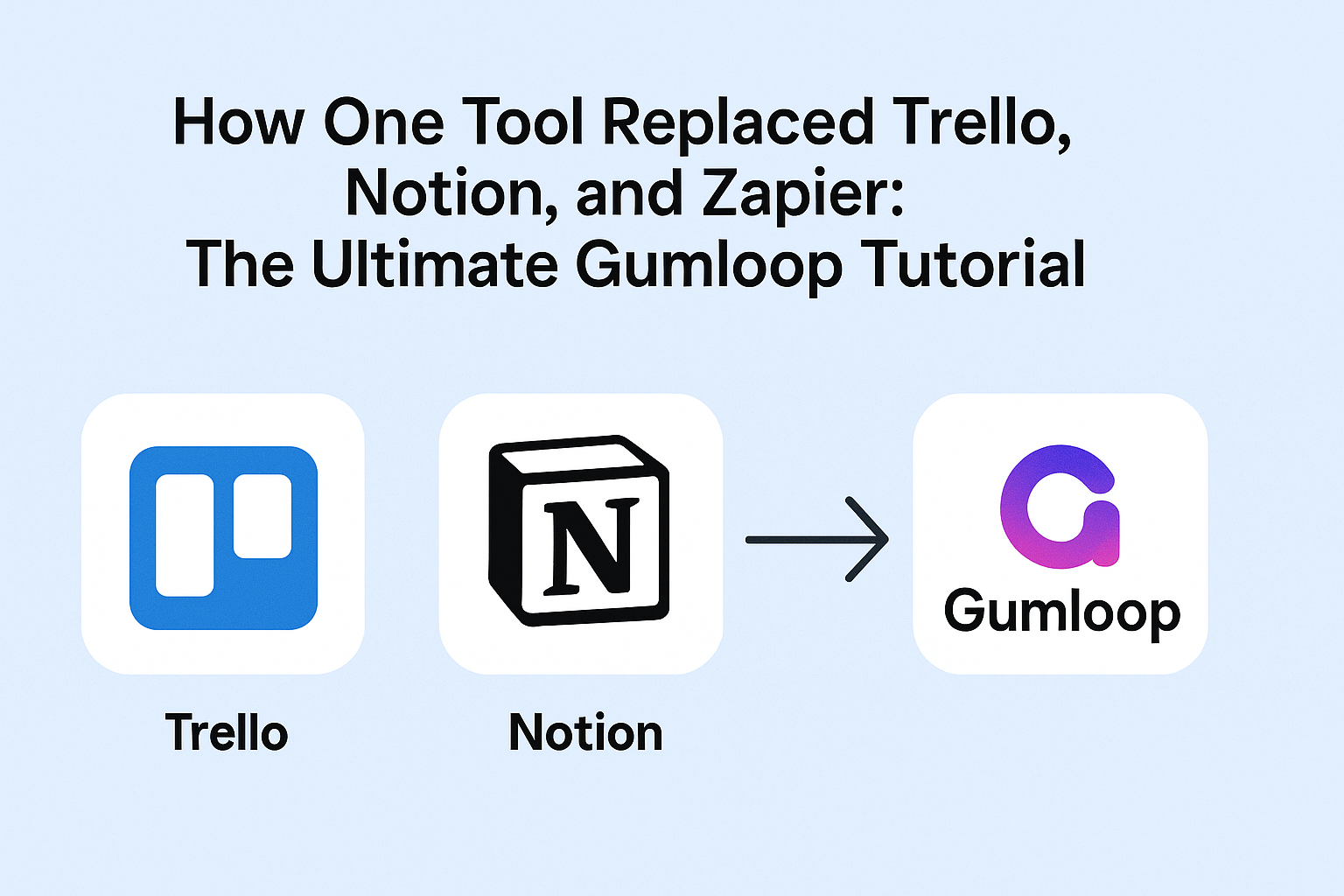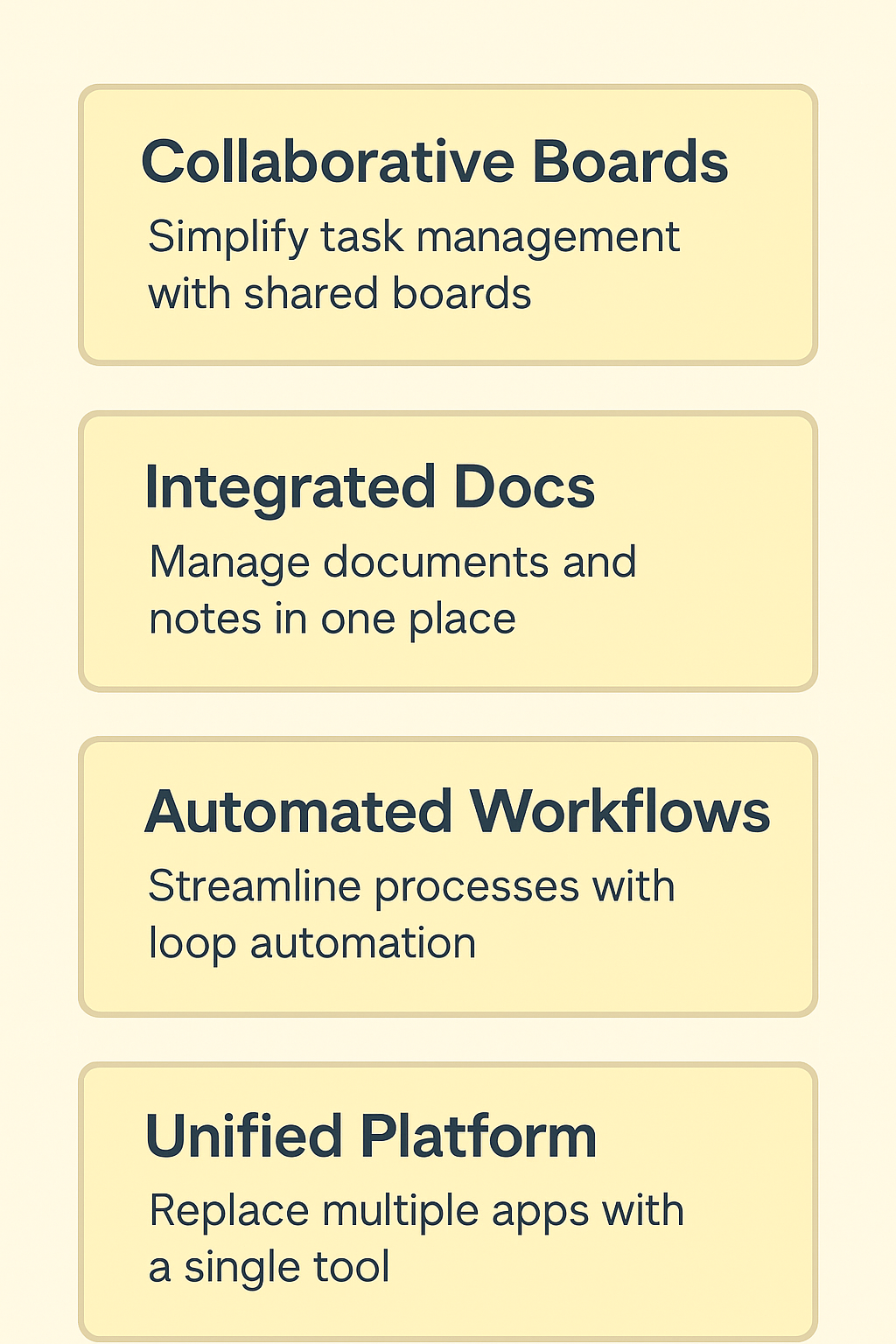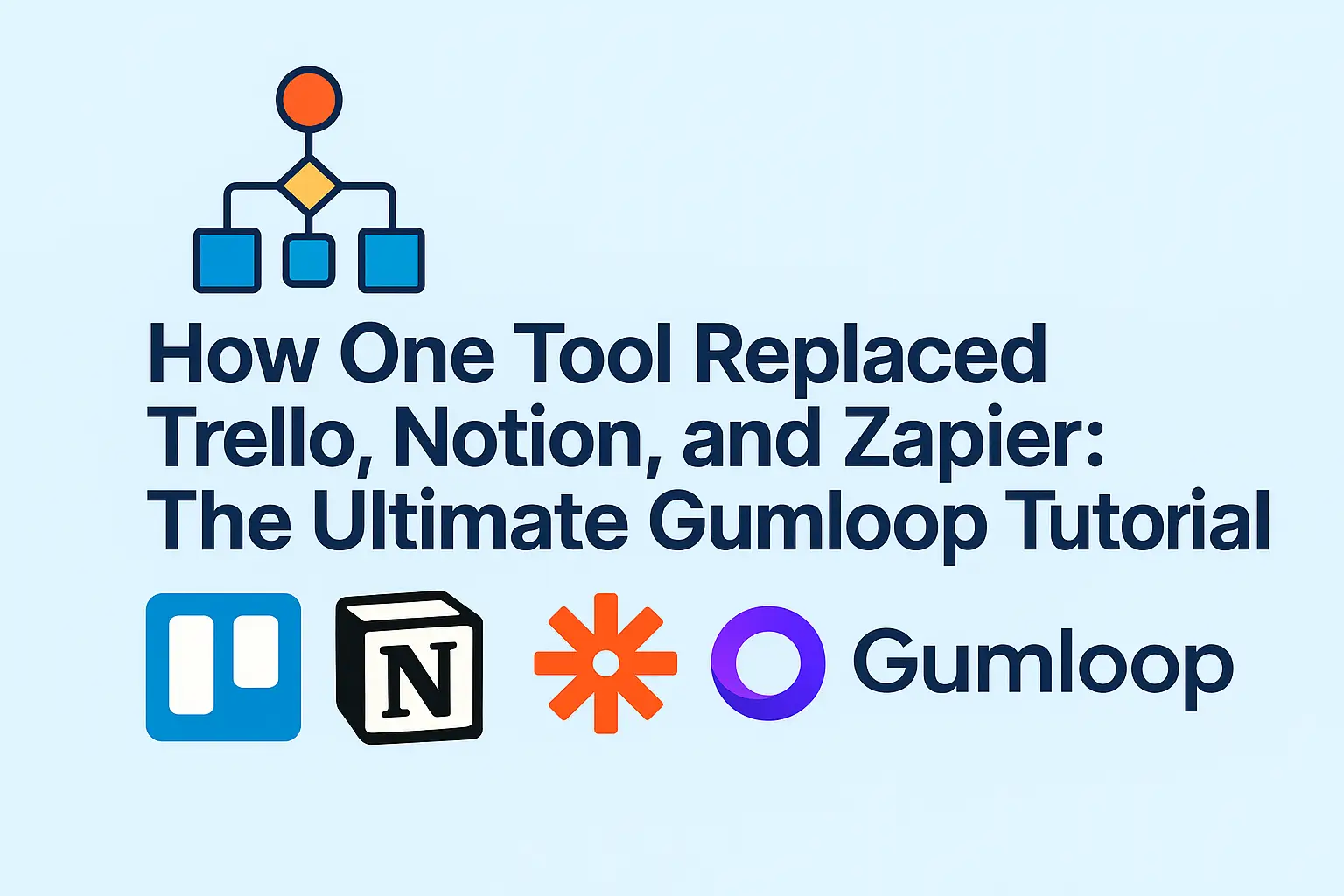Introduction: Ready to Master Gumloop?
Struggling to keep your creative or collaborative projects on track? You’re not alone. What if there was a single tool that could organize your ideas, automate your processes, and supercharge your productivity—all in one place? Welcome to the world of Gumloop.
This Gumloop tutorial is your complete guide to mastering the platform. Whether you’re new to digital workflow tools or switching from platforms like Notion, Trello, or Airtable, this guide will walk you through Gumloop features with practical examples, clear steps, and useful tips.
By the end of this post, you’ll be able to:
- Navigate the Gumloop interface with confidence
- Utilize all core Gumloop features
- Automate repetitive tasks using workflows
- Collaborate efficiently with your team
- Integrate Gumloop with your existing tools
Let’s dive in.
What is Gumloop?
Gumloop is a no-code productivity and collaboration platform that blends project management, workflow automation, and real-time collaboration—all in a single tool. Think of it as the modern hybrid of Notion’s flexibility, Trello’s task management, and Zapier’s automation—but simpler and more intuitive.
It’s especially popular among:
- Startups and solopreneurs
- Remote teams
- Agencies and creatives
- Product managers
Pro Tip: Gumloop is ideal for visual thinkers and team-based workflows. Its visual boards and loop-based automation make it easy to scale operations.
Key Gumloop Features You Should Know
To make the most of this Gumloop tutorial, you must understand its core strengths. Here are the top Gumloop features you’ll be using:
1. Visual Workspaces
Create interactive boards, documents, and embedded workflows in one collaborative space. You can easily drag and drop elements to build your dashboard.
2. Loop-based Automation
Automate tasks with a logic-based loop engine that lets you create conditions, triggers, and actions.
3. Real-Time Collaboration
Work with your team in real-time with chat, version history, and shared access control.
4. Pre-Built Templates
Use templates for project planning, content calendars, marketing workflows, client onboarding, and more.
5. Integration Hub
Connect Gumloop to Google Workspace, Slack, Trello, Notion, Zapier, and over 100 other tools.
Insert screenshot: Gumloop dashboard with tabs labeled “Loops,” “Projects,” and “Templates”
These powerful Gumloop features set the foundation for building scalable workflows that save you time and reduce manual errors.
Step-by-Step Gumloop Tutorial for Beginners
Now let’s get hands-on. Follow this beginner-friendly Gumloop tutorial to go from setup to workflow automation.
Step 1: Sign Up and Create Your Workspace
- Visit Gumloop.com and sign up.
- Name your workspace and choose your role (marketer, product lead, etc.).
- Invite team members or skip for now.
Insert visual: Screenshot of the onboarding screen
Step 2: Choose a Template or Start from Scratch
Templates save time. Choose from use cases like:
- Project Tracker
- Content Planning
- Bug Reporting
If you want full control, start with a blank board.
Step 3: Add Cards and Loops
- Cards = Tasks or blocks of work
- Loops = Automations you set up for recurring tasks
Example: Create a “Weekly Newsletter” card, then loop it to send reminders every Friday.
Step 4: Set Conditions and Triggers
- Example: “If a task is marked ‘Completed,’ then notify the client via email.”
- You can stack multiple actions into one loop.
Step 5: Collaborate and Track Progress
Use real-time chat, assign team roles, and view activity logs.
Congratulations—you just completed your first Gumloop tutorial segment!
Gumloop Features vs. Other Tools
Let’s see how Gumloop features compare to other popular tools:
| Feature | Gumloop | Trello | Notion | Zapier |
|---|---|---|---|---|
| Project Boards | ✓ | ✓ | ✓ | ✗ |
| Built-in Automation | ✓ | Limited | Limited | ✓ |
| Visual Workflows | ✓ | ✗ | ✗ | ✓ |
| Collaboration Tools | ✓ | ✓ | ✓ | ✗ |
| Template Library | ✓ | ✓ | ✓ | ✗ |
Source: ProductHunt Comparisons
As seen above, Gumloop features provide a seamless, all-in-one solution.

Real-World Use Case: A Marketing Agency
Meet Sarah, who runs a small marketing agency. Before using Gumloop, her team struggled with:
- Scattered tools (emails, Trello, spreadsheets)
- Missed deadlines
- Poor client updates
After switching to Gumloop:
- Her team created a client onboarding template
- Automated content calendar approvals with loops
- Connected Gumloop to Slack for real-time alerts
Today, Sarah runs her operations 25% faster, with higher client satisfaction. That’s the power of this Gumloop tutorial in action.
Advanced Use Cases: Scaling Beyond Basics
Once you’re comfortable with the basics, Gumloop can be scaled to handle more complex workflows. Here are some advanced ways to extend the power of Gumloop features:
1. Multi-Stage Automation
You can chain multiple loops together to create a sequence of tasks. For example, when a new client is onboarded, you can:
- Send a welcome email
- Create a project folder
- Assign tasks to team members
2. Conditional Routing
Build advanced logic like “if task is overdue, alert the manager and reschedule task.” This helps you maintain oversight and accountability.
3. Client Portals
Use Gumloop to set up secure, limited-access dashboards where clients can view the status of their projects without altering your internal workflows.
4. Reporting Dashboards
Use Gumloop’s data widgets to create visual reports that auto-update based on progress. These are great for weekly reviews and investor updates.
Insert visual: Example of a reporting dashboard with charts and KPIs
These use cases are where Gumloop truly shines above tools like Trello and Notion, which require external integrations or manual steps for similar functions.
Tips to Onboard Your Team Faster

If you’re introducing Gumloop to your organization, here are some quick onboarding tips:
- Start with a pilot project to demonstrate value
- Host a walkthrough using this Gumloop tutorial
- Assign a Gumloop Champion on your team who manages training and templates
- Offer mini-challenges to explore advanced Gumloop features, such as building a loop or customizing a dashboard
These tips can help you go from curiosity to company-wide adoption in days.
Troubleshooting with Gumloop: Solving Common Problems
Even with an intuitive platform like Gumloop, you might run into issues that slow down your workflow. Here are some of the most common problems users face and how to solve them using built-in Gumloop features.
1. Loops Not Triggering
Check your conditions and triggers—many new users forget to activate a loop or define clear trigger actions. Always preview your loop before launching.
2. Integration Errors
Sometimes third-party apps like Slack or Trello may not sync properly. Head to the Integration Hub, re-authorize the connection, and double-check that permissions are granted.
3. Performance Lag
If your dashboard loads slowly, reduce unnecessary visual widgets, or archive completed loops and cards. Gumloop performs best when boards are streamlined.
4. Team Access Issues
Permissions must be clearly defined. Use role-based access controls to ensure collaborators can edit only what they’re responsible for.
By becoming familiar with these common snags and their solutions, you’ll move through this Gumloop tutorial more smoothly and with confidence.
Using Gumloop for Strategic Planning
Beyond daily tasks and simple automation, Gumloop is a powerful tool for long-term planning. Many businesses use Gumloop features to support quarterly goal tracking, team OKRs, and product roadmaps.
Strategic Templates
Use the strategy-focused templates under the “Planning” category. These come with built-in loops that remind team leads to submit updates, align stakeholders, and adjust targets based on performance.
Weekly Standups and Reports
Set up recurring loops that trigger weekly status update reminders and compile inputs into a shared board. This becomes your automated status meeting report.
Product Launch Workflows
Map out pre-launch, launch day, and post-launch tasks using sequential loops and real-time alerts. Assign timelines and dependencies to keep teams aligned.
These advanced planning techniques help organizations scale using Gumloop as their central operations command center. Once you master this level of the Gumloop tutorial, the possibilities are endless.
Conclusion: Your Next Steps with Gumloop
Now that you’ve gone through this full Gumloop tutorial, it’s time to take action:
- Start building your first project board
- Explore advanced Gumloop features like nested loops and data syncing
- Invite collaborators and test a full workflow
Want to learn more or revisit key ideas? Check out our detailed Gumloop overview here
Ready to streamline your workflow the smart way? Gumloop is your answer.
Suggested External Resources:
If this Gumloop tutorial helped you, share it with your team, subscribe to our newsletter, or drop your questions in the comments. Let’s build better workflows—together.

